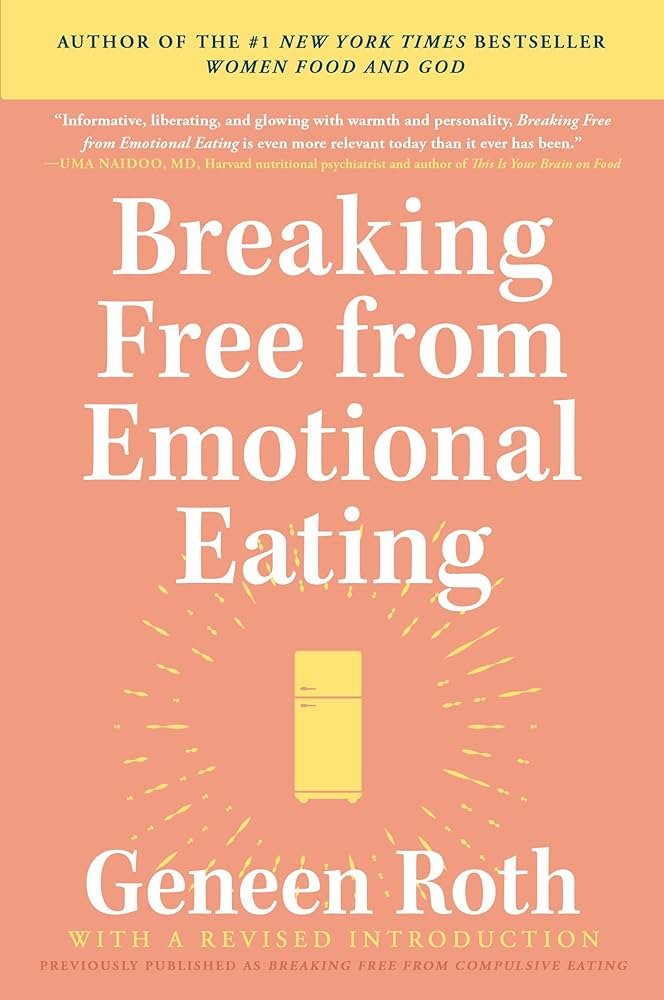
Identifying Emotional Triggers
The perplexing phenomenon of turning to food for solace during moments of heightened emotions is a familiar experience for all. There exists an almost mystical power within food that has the ability to assuage our troubled souls and bring about an improved state of being. However, have you ever paused to ponder upon the catalysts behind these episodes of emotional eating? It appears that it is not solely a matter of satiating hunger or succumbing to a craving for sweetness. Emotions themselves play a profound role in shaping our choices when it comes to nourishment.
Contemplate this peculiar occurrence – how often do you find yourself yearning for a substantial serving of ice cream after enduring an exceptionally taxing day? Or reaching out for a bag filled with chips when boredom and loneliness take hold? These are but mere illustrations of the emotional triggers capable of leading us down the path of thoughtless consumption. Stress, ennui, solitude, and even jubilance all possess the capacity to guide our decisions regarding sustenance. As acclaimed psychologist Daniel Goleman once opined, “Emotions are not merely the energy that propels the cognitive mechanisms within reasoning beings; they also serve as impelling forces.” This statement encapsulates flawlessly the intricate connection between our emotions and dietary inclinations.
So then, how can we successfully detect these emotional triggers and reclaim authority over our culinary selections? The journey commences with cultivating mindfulness through acute awareness and keen observation. Dedicate time towards introspection on your patterns concerning consumption while simultaneously noticing recurring instances where emotions appear to be steering your nutritional preferences. Perhaps it is at specific intervals throughout the day or during particular activities that you find yourself susceptible, or maybe certain individuals or locales elicit this form of emotionally-driven eating within you. By identifying such triggers, one can embark upon crafting strategies aimed at skillfully navigating them. In accordance with fitness guru Bob Harper’s sagacious words: “You must remain cognizant of what you are ingesting, the motivations behind your ingestion, and most importantly, when to cease.” By cultivating a mindful comprehension of one’s emotional triggers, the initial step towards emancipation from their grasp is taken, enabling the discovery of healthier coping mechanisms.
Understanding the Connection Between Emotions and Food
Imagine this: after enduring a grueling, tension-filled day at work, where deadlines loomed ominously and your boss constantly loitered nearby like an unwelcome shadow, all you yearned for was the solace of home and the indulgence of an entire tub of ice cream. Sound familiar? Well, my friend, you are definitely not alone in this regard. Many of us seek solace in food when we find ourselves overwhelmed or despondent. It’s akin to being enveloped by a warm, viscous embrace that soothes our troubled emotions. As the esteemed food psychologist Dr. Brian Wansink once asserted with remarkable insight, “Emotional eating is not merely a reaction to emotional upheaval; it is also a conduit for generating emotions.” Food possesses the extraordinary ability to evoke specific emotions within us and provide temporary respite from our troubles.
But let us ponder why exactly our emotions share such an intimate bond with what we consume. It all boils down to the intricate workings of our cerebral circuitry. When we experience powerful emotions, particularly negative ones such as stress or sorrow, our brains release chemicals like cortisol and serotonin. These chemical messengers exert a profound influence on both our appetite and cravings; thus compelling us towards specific foods that offer comfort during trying times. As elucidated by Dr. Carrie Burrows- an authority on matters concerning health and wellness- “During moments of heightened stress, there exists an inclination towards craving foods replete with sugar, fat, and salt due to their capacity for stimulating the brain’s pleasure center which bestows upon us feelings of elation.” Thus emerges emotional eating- the brain’s pursuit of gratification and respite amidst turbulent emotional landscapes.
In furtherance of unraveling this captivating subject matter surrounding emotional eating- let us embark upon a journey into exploring various triggers capable of propelling us towards seeking solace within that tantalizing bag brimming with chips or that pint-sized container of ice cream. Stay tuned, dear reader, for an enthralling exploration lies just beyond the horizon!
Exploring Alternative Coping Mechanisms
When it comes to navigating the labyrinthine realm of our emotions, a multitude of individuals seek solace in the alimentary embrace provided by food. However, what if I were to reveal that there exist myriad other avenues through which we can contend with these tumultuous situations? The time has come to embark upon an expedition into alternative coping mechanisms that possess the capability to liberate us from the shackles of emotional eating.
One such option entails engaging in physical activity. Not only has exercise been proven to enhance our corporeal well-being, but it also possesses the power to elevate our spirits. As illustrious fitness guru Richard Simmons once eloquently proclaimed, “Perspiring harmoniously alongside rhythmic melodies is not solely restricted to incinerating calories; it additionally serves as a conduit for expelling those pent-up sentiments!” Whether one chooses dance as their artistic expression, embarks on a jogging sojourn, or immerses themselves within the confines of a gymnasium, discovering an activity that brings joy and elation can serve as an exemplary method through which one can redirect their emotions towards positive and productive outlets.
Another viable alternative coping mechanism lies within indulging oneself in creative endeavors. Unleashing your innermost thoughts and feelings through artistry, writing prose imbued with personal reflection or creating melodious symphonies holds immense therapeutic potential. In alignment with musician and activist Bob Marley’s sagacious musings: “Music possesses profound healing attributes; its resonant chords assuage anguish without inflicting pain.” Thusly, why not seize this opportune moment to wield a paintbrush like a sorcerer casting spells upon canvas or grasp hold of a pen like an alchemist transmuting ink into heartfelt narratives? By doing so not only will you divert your attention away from succumbing to emotional eating’s siren call but also allow yourself access into uncharted realms where emotions are given voice and meaning.
It remains paramount to bear in mind that embarking upon an exploration of alternative coping mechanisms does not require forsaking our emotions entirely. Rather, it necessitates uncovering healthier methodologies with which we can navigate their tempestuous waters. Whether you choose to perspire or paint a masterpiece, remain receptive to embracing novel experiences and ascertain what resonates most harmoniously with your being. Ultimately, as the adage proclaims: “Life is akin to a bicycle; its equilibrium hinges on perpetual motion!”
Building a Support System
When it comes to the enigmatic realm of emotional eating, cultivating a robust support system can wield an extraordinary influence. The act of enveloping oneself in the company of individuals who perceive and empathize with your personal struggle acts as a catalyst for accountability and motivation. As the adage proclaims, “Encircle yourself with those who discern greatness within you, even when your own vision falters.” This network not only furnishes emotional succor but also imparts practical counsel, tips, and encouragement throughout your weight loss odyssey.
An elemental facet in constructing such a support system revolves around seeking out kindred spirits who have traversed or are presently navigating comparable experiences. Establishing connections with others well-acquainted with the arduous trials intrinsic to emotional eating bestows upon one a sense of camaraderie that assuages feelings of solitude amidst their struggles. As comedic virtuoso Ellen DeGeneres once quipped, “Surround yourself with individuals who elicit laughter from within you; they shall assist in obliterating negativity while accentuating positivity.”
In conjunction with finding peers, availing oneself of professional assistance possesses immense potential for fortifying one’s support network. Collaborating alongside therapists or registered dietitians confers expert guidance and tailored sustenance suited precisely to individual needs. These skilled professionals adeptly navigate through the intricate nuances embedded within emotional eating whilst offering strategies designed specifically for its conquest. Sage words from Oprah Winfrey encapsulate this sentiment: “Saturate your surroundings solely with individuals committed to propelling you skyward.”
However, it is crucial to bear in mind that building a support system does not entail relinquishing responsibility for resolving personal quandaries; rather it entails discovering an interconnected web comprising souls capable of providing sagacity, inspiration, and empathy during times both trying and triumphant. Together as one collective entity fortified by tacos rather than negativity (as humorously remarked by Joy Fitness), the depths of emotional eating can be surmounted, and weight loss aspirations realized.
Mindful Eating: Tuning into Hunger and Fullness Cues
Delving into our hunger and fullness cues is a vital aspect of mindful eating. It revolves around being cognizant of the signals our bodies emit and appropriately responding to them. In the words of Joy Fitness, “Your body functions like a well-oiled machine, capable of discerning when it requires sustenance and when it has reached its limit.” Consequently, let us take a moment to immerse ourselves in this notion and investigate how we can seamlessly integrate it into our daily routines.
How frequently do we consume food out of sheer habit or due to societal norms dictating meal times rather than genuine hunger? Mindful eating encourages us to halt momentarily and evaluate our level of hunger before indulging in a meal. When those sensations arise, inquire within yourself, “Am I truly famished or merely experiencing an insatiable desire?” It proves crucial to distinguish between physical cravings and emotional or psychological longings. As Jillian reminds us, “Hunger manifests as a tangible sensation devoid of any emotional connotations.” Subsequently, the next time you reach for that bag of chips, spare a moment to check in with your body’s needs and determine if true hunger persists or if there lies an alternative cause behind your actions. Stay tuned as we delve deeper into unraveling the intricate relationship between emotions and food while acquiring valuable tools for navigating these triggers on our quest towards practicing mindful eating.
Distracting Yourself from Emotional Eating Urges
When it comes to the perplexing nature of emotional eating urges, there exists a burstiness in the form of distractions that can aid in avoiding succumbing to the allure of the cookie jar. As famously stated by none other than Joy Fitness herself, “If one finds themselves inexplicably drawn towards immersing their being into a sack full of chips, it is undoubtedly time to alter their focus.” And without a doubt, she couldn’t be more accurate! Shifting one’s attention towards something pleasurable and captivating has proven instrumental in diverting one’s mind away from those tantalizing temptations. So why not indulge oneself in catching up on an adored television series, immersing oneself within pages filled with literary brilliance or even embarking upon a novel pastime such as painting or gardening? The array of possibilities knows no bounds and all are infinitely superior to finding oneself knee-deep within a bag brimming with potato chips.
Another remarkably effective technique for distracting oneself from engaging in emotional eating lies within physical activity! Astonishingly enough, exercise not only boosts one’s mood but also assists significantly in curbing those insatiable cravings. In the memorable words uttered by celebrity trainer Bob Harper, “Exercise serves as an entirely organic alternative to Xanax with absolutely zero undesirable side effects.” Thus it is advised that you fasten your athletic shoes securely before venturing out onto paved terrain or sway rhythmically while indulging your auditory senses with harmonious melodies. Alternatively, consider partaking in an invigorating high-intensity workout session designed exclusively to get your heart racing at remarkable speeds. By doing so, not only will you experience enhanced physical well-being but you shall simultaneously grant respite for your weary mind from these bothersome yearnings that plague you incessantly. For who requires an entire pint of ice cream when they possess the ability to break into perspiration and bask triumphantly amidst feelings reminiscent of championship glory?


